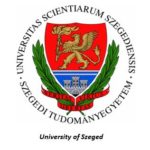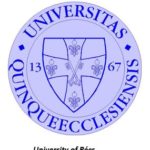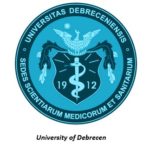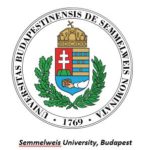Hungary is a unitary parliamentary republic in the Central Europe. It covers an area of 93,030 square kilometres, situated in the Carpathian Basin. With about 10 million inhabitants, Hungary is a medium-sized member state of the European Union. The official language is Hungarian. Hungary’s capital and largest metropolis is Budapest.
Major urban areas include: Debrecen, Szeged, Miskolc, Pécs and Győr.
NEUROLOGY IN HUNGARY: PAST, PRESENT, AND FUTURE
“Neurology is currently recognized as an independent clinical and academic specialty in Hungary, but the early history of Hungarian neurology was intertwined with the development of internal medicine and psychiatry. Up to the end of the 19th century, neurologic patients were mostly treated at internal medicine departments. In 1882, the University of Budapest founded the chair of mental diseases, whose first director was Prof. Károly Laufenauer. His aim of creating an independent department was achieved by his successor, Prof. Erno Moravcsik, in 1908 when a new building was completed to house the Department of Mental and Nervous Diseases. Their successor Prof. Károly Schaffer, a renowned neuropathologist, founded the school of clinical neurology in Hungary. His followers included Béla Horányi, István Környey, Kálmán Sántha, and Dezs}o Miskolczy, who were all determining figures in the history of Hungarian neurology. Prof. Béla Horányi established the neurophysiologic laboratory and initiated research into neuromuscular diseases; neurology and psychiatry first separated under his leadership, but this did not last. The complete separation of neurology and psychiatry in Budapest first occurred in 1976.”
See more: Neurology in Hungary: past, present, and future. Majláth Z, Ajtay A, Bereczki D, Csiba L, Komoly S, Vécsei L. Neurology. 2013 Apr 16;80(16):1518-20. doi: 10.1212/WNL.0b013e31828cf7c3.
Ferenc Pápai Páriz (1649-1716): Pax corporis (1690)
“One of the most prevalent neurological disorders is Parkinson’s disease (PD), characterized by four cardinal signs: tremor, bradykinesia, rigor and postural instability. Although individual signs of PD – most frequently tremor – have been described since ancient times, the first systematic description of the disease is attributed to James Parkinson in 1817. Here we present evidence that not only individual signs, but the disease itself with all four cardinal signs were described in 1690 by Ferenc Pápai Páriz, in a Hungarian medical text over 120 years before the classical description of James Parkinson. In this article we draw the reader’s attention to the descriptive chapter in Pápai’s book that was published in Hungarian, which because it is understood by so few people, has resulted in this description of PD being ignored in the medical literature.”
See more: The description of all four cardinal signs of Parkinson’s disease in a Hungarian medical text published in 1690. Bereczki D. Parkinsonism Relat Disord. 2010 May;16(4):290-3. doi: 10.1016/j.parkreldis.2009.11.006.
Hungarian medical history is very rich of several eminent scientists and physicians.
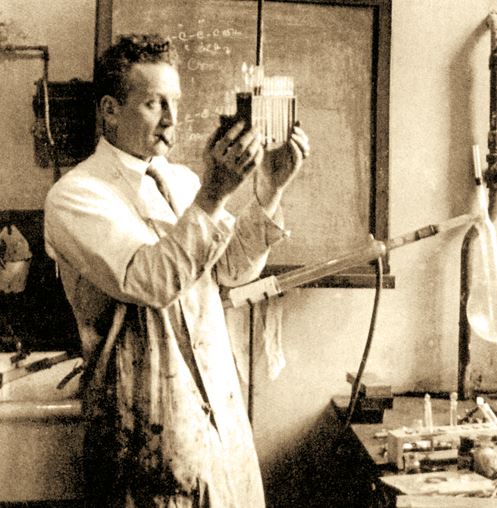
Albert Szent-Györgyi
– József Baló (1895-1979): Balo’s concentric sclerosis was originally named by him. ‘Encephalitis periaxialis concentrica’ (Balo Jozsef, Arch Neurol Psych 1928;19:242-244.), and later renamed as ‘Concentric sclerosis’, or Balo’s disease
– László Meduna (1896-1964) as a student of Károly Schaffer described the convulsive therapy of psychoses in 1934.
– Albert Szent-Györgyi (1893-1986) was a Hungarian physiologist who won the Nobel Prize in Physiology and Medicine in 1937. He is credited with discovering vitamin C and the components and reactions of the citric acid cycle.
The International League Against Epilepsy (ILAE) has been established in 1909 in Budapest, Hungary by Gyula Donáth (1849-1945).
More recently, In Debrecen, László Molnár (1923-1999) founded the 2nd stroke unit of Europe in 1969. In Budapest, Endre Csanda (1923-2015) established the first headache outpatient ward in Hungary. In Pécs, György Pálffy (1920-2011) studied multiple sclerosis. In Szeged, Lajos Heiner (1931-1996) examined the neuromuscular disorders.
There are four medical faculties of the universities in Hungary with all of 12.300 medical students (5,900 Hungarian medical students, 4,400 in the English and 2,000 in the German language medical program). The medical faculties are located in Budapest, Debrecen, Pécs and Szeged.
Budapest: 2,307 Hungarian, 1,256 English, 745 German (+ 216 from Hamburg education program) language medical students
Debrecen: 1,306 Hungarian, 1563 English language medical students
Pécs: 1,000 Hungarian, 885 English, 655 German language medical students
Szeged: 1,267 Hungarian, Hungarian, 689 English (from almost 70 countries), 332 German language medical program (on 1st and 2nd years) students
The national system in Hungary works mainly as a public health system with governmental health insurance. Private health system work mainly as outpatient wards.
The number of adult neurologists in Hungary approximately 600 persons, from which about 60% are female. The neurologists/population ratio is about 1/13,000.
The residency in neurology program lasts five years. The education program comprehends: neurology inpatient and outpatient practices, stroke unit, neuroimaging, clinical neurophysiology, neurosurgery practice, child neurology, neuropathology, neuro infectivology, psychiatry, neurorehabilitation.
The undergraduate medical and neurological training is going on in Hungarian, English and German. All four medical faculties are very well equipped. The neurological services provide updated neuroimaging (e.g., CT, CTA, MRI, MRA, DSA, PET, SPECT, ultrasound), clinical neurophysiological equipment (e.g., EEG, ENG, EMG, evoked potentials), and also CSF diagnostic methods (e.g., nephelometry, Western blot). The specific of our medical faculties in aspects of neurological health care is the high-developed diagnostic methods and the use of the evidence-based treatments.
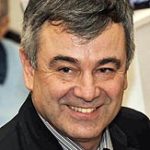
László Csiba
The name of our national neurological society is the Hungarian Neurological Society
with about. 500 members. László Csiba is the president.
Past-presidents were: Sámuel Komoly, László Vécsei, Imre Szirmai, Endre Csanda.
Web-site: http://mneuro.hu/
In 2011, when Prof. Vécsei was President, the Hungarian Neurological Society co-hosted the EFNS congress, during which the presidents of the EFNS and ENS signed the “Treaty of Florence”. This marked the beginning of the EAN.
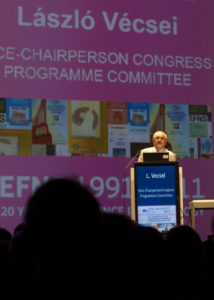
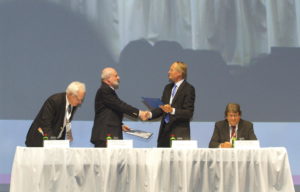
Neurology-specific national medical societies in Hungary are: Hungarian Headache Society, Hungarian Pain Society, Hungarian Stroke Society, Hungarian Epilepsy Chapter of ILAE, Hungarian Neuroimunology Society, Hungarian Neuropathology Society, Hungarian Neurosonology Society, Hungarian Neuroradiology Society, Hungarian Clinical Neurophysiological Society, Hungarian Neurosurgery Society, Hungarian Child Neurology Society, Hungarian Parkinson’s Disease Society, Hungarian Sleep Society, Hungarian Clinical Neurogenetics Society, Hungarian Neurooncological Society, Hungarian Neuroscience Society.
The journal of Clinical Neuroscience/Ideggyógyászati Szemle (on PubMed: Ideggyogy Sz) is the official journal of the ten neurological societies mentioned above. The journal has an impact factor, and is indexed and abstracted in MEDLINE, SCOPUS, Google Scholar, ISI Web of Science. Web-site: http://elitmed.hu/kiadvanyaink/ideggyogyaszati-szemle/
The most attractive points of the Hungarian neurology are the high-tech diagnostic and therapeutic options, the high-level graduated and post-graduating medical education, the well-equipped university hospitals, and our cosy atmosphere.
We welcome all readers to visit the 49th International Danube Symposium in April 2017. More info can be found here
This report has been composed by:
Dániel Bereczki MD DSc, Head of the Department of Neurology, Budapest
László Csiba MD DSc, Head of the Department of Neurology, Debrecen
Sámuel Komoly MD DSc, Head of the Department of Neurology, Pécs
László Vécsei MD DSc, Head of the Department of Neurology, Szeged
Délia Szok MD PhD, Department of Neurology, Szeged
